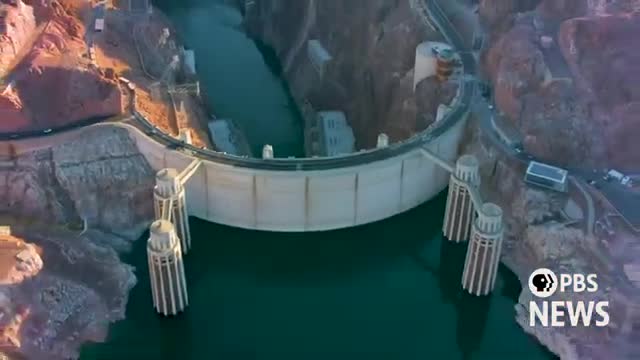Hoover Dam faces water crisis as Lake Mead dwindles

This article was created by AI summarizing key points discussed. AI makes mistakes, so for full details and context, please refer to the video of the full meeting. Please report any errors so we can fix them. Report an error »

The Hoover Dam, a symbol of American engineering, continues to play a crucial role in managing water resources in the arid Southwest. Constructed during the Great Depression, the dam was completed in 1936 and created Lake Mead, the largest reservoir in the United States. This monumental project was initially proposed in 1922 by Arthur Powell Davis and was pivotal in establishing the Colorado River Compact, which governs water distribution among the states sharing the Colorado River.
Today, the dam supports over 40 million people and irrigates 5 million acres of farmland, making it an essential component of the region's infrastructure. However, the ongoing drought and increased water usage have raised concerns about the sustainability of Lake Mead. The reservoir recently reached an all-time low of 1,040 feet, significantly below its full capacity, although it has since risen to 1,062 feet.
Experts warn that the current water withdrawals from Lake Mead exceed its natural replenishment, likening the reservoir to a checking account that is being depleted faster than it is being filled. John Fleck, a water expert and author, emphasized the need for contextual understanding of the Colorado River's challenges, particularly in one of the driest regions of the United States. As the situation evolves, the management of this vital resource remains a pressing issue for policymakers and residents alike.
Today, the dam supports over 40 million people and irrigates 5 million acres of farmland, making it an essential component of the region's infrastructure. However, the ongoing drought and increased water usage have raised concerns about the sustainability of Lake Mead. The reservoir recently reached an all-time low of 1,040 feet, significantly below its full capacity, although it has since risen to 1,062 feet.
Experts warn that the current water withdrawals from Lake Mead exceed its natural replenishment, likening the reservoir to a checking account that is being depleted faster than it is being filled. John Fleck, a water expert and author, emphasized the need for contextual understanding of the Colorado River's challenges, particularly in one of the driest regions of the United States. As the situation evolves, the management of this vital resource remains a pressing issue for policymakers and residents alike.
View full meeting
This article is based on a recent meeting—watch the full video and explore the complete transcript for deeper insights into the discussion.
View full meeting